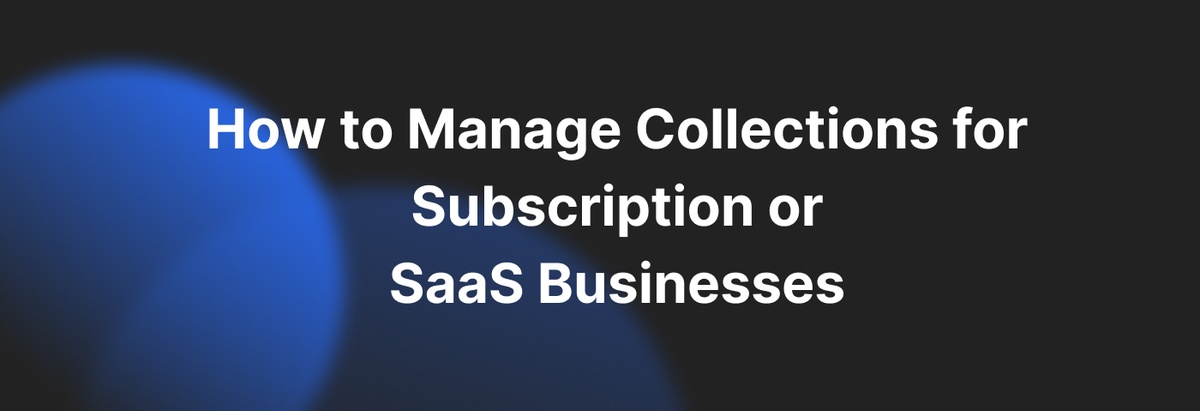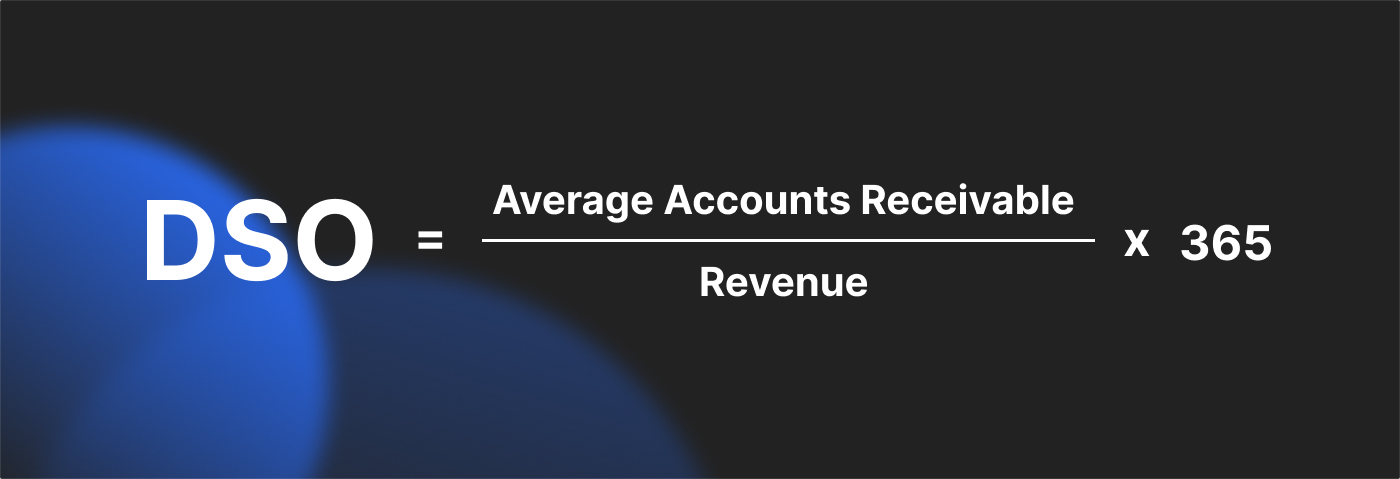How to Manage Collections for Subscription or SaaS Businesses
Updated October 30th 2025

Table of Contents
- Why Subscription Collections Are a Different Beast
- Stage One: Prevent the Problem Before It Starts
- Stage Two: Build a Thoughtful Dunning Strategy
- Stage Three: Measure, Learn, Improve
- Stage Four: When to Bring in Reinforcements
- Retrievables: Making Commercial Collections Less Stressful
- Collections as a Relationship Tool, Not a Weapon
- Using Technology Intelligently
- Compliance: The Non-Negotiable Layer
- A Real-World Example
- Frequently Asked Questions
- Final Thoughts: Collections as a Growth Strategy
Subscription businesses are built on a beautiful idea: predictable income through loyal, long-term customers. But behind that predictability lies a quieter, persistent threat—delayed or failed payments that quietly erode margins.
For SaaS companies, where every renewal counts, collections are more than just a financial function; they’re part of customer success. A late payment isn’t just missing money—it’s a signal about customer engagement, communication, and trust.
That’s why mastering collections management is essential for every subscription-driven business—from lean startups to enterprise SaaS providers with global clients.
Why Subscription Collections Are a Different Beast
Collections in a subscription business differ from the one-time invoice world. Instead of chasing a single overdue payment, companies must manage hundreds or thousands of micro-failures across automated systems.
Here’s what makes the job trickier:
- Automated billing doesn’t mean automatic payment. Cards expire, banks decline charges, and customers forget to update details.
- Churn is always lurking. Press too hard and you risk losing a customer forever; too soft and you lose revenue.
- Global payments add legal and logistical layers. Different regions, currencies, and compliance laws complicate the process.
In short, collections for SaaS businesses require a blend of data, diplomacy, and discipline.
Stage One: Prevent the Problem Before It Starts
The smartest collections process is the one you rarely have to use. Prevention begins the moment a customer signs up.
Make Payment Frictionless
Offer multiple payment options—credit cards, ACH, digital wallets, even localized systems for international customers. Every additional option reduces the likelihood of an involuntary churn (a cancellation caused by failed payments).

Automate, But Don’t Abdicate
Use automated billing reminders, but craft them like conversations, not warnings. A quick “Hey, your card on file is expiring soon” can save a subscription more effectively than a robotic overdue notice.
Keep Information Fresh
Leverage tools that automatically update stored payment methods when banks issue new cards. These quiet, behind-the-scenes systems can save countless hours in future follow-ups.
Stage Two: Build a Thoughtful Dunning Strategy
Dunning—the practice of sending payment reminders—has a bad reputation because it’s often handled poorly. But when done right, it’s a blend of psychology and communication.
A well-designed dunning flow might look like this:
- Day 1: Gentle nudge — assume good faith, offer an easy payment fix.
- Day 5: Friendly reminder — highlight continuity (“We’d love to keep your service active”).
- Day 10: Escalation — clear notice of next steps if payment isn’t received.
- Day 20+: Temporary suspension or personal outreach.
Notice the shift in tone. Early messages sound conversational; later ones sound procedural but never hostile. The best SaaS brands maintain a brand-consistent voice even when chasing money.
Stage Three: Measure, Learn, Improve
Collections should be treated as an evolving process, not a one-time fix. Track patterns, not just payments.
Key metrics to watch:
- Recovery Rate: How much overdue revenue actually comes back.
- Days Sales Outstanding (DSO): The average collection time.
- Customer Retention After Payment Issues: Do customers renew after a payment dispute?
- Failed Transaction Rate: Which payment methods or geographies cause the most issues?
Each of these tells a story about customer behavior and operational efficiency. Data isn’t just numbers—it’s a map to where your process needs tuning.

Stage Four: When to Bring in Reinforcements
Every company hits a wall where internal collection efforts stop working. Maybe the client has gone silent, or the overdue balance is too significant to ignore.
That’s the moment to escalate professionally—not emotionally. Waiting too long can reduce recovery odds and strain cash flow.
For commercial or enterprise SaaS businesses, external help is often the most effective step. But finding the right agency or attorney can be confusing. That’s where Retrievables shines.
Retrievables: Making Commercial Collections Less Stressful
Retrievables exists to simplify one of the most frustrating parts of running a business: choosing a trustworthy collection partner.
Rather than acting as an agency itself, Retrievables operates as a matchmaking platform for debt recovery. Businesses submit their case details—industry, amount owed, jurisdiction—and Retrievables matches them with the most appropriate, vetted collection agency or attorney.
Here’s how it helps SaaS and subscription-based companies:
- Expertise in Commercial Debt
Retrievables specializes in B2B collections, not consumer debt. That’s crucial for SaaS companies dealing with business clients under contract rather than individuals with subscriptions.
- Legal and Ethical Assurance
All partners are licensed and compliant with regional regulations. That means you recover funds while protecting your brand reputation.
- Transparent Process
You’ll know exactly who’s handling your case, what the terms are, and what to expect. No opaque fees. No hidden commissions.
- Saved Time, Recovered Revenue
Instead of spending weeks searching for the right attorney or agency, Retrievables connects you instantly with the best fit—so your finance team can focus on strategy, not chasing overdue accounts.

Collections as a Relationship Tool, Not a Weapon
For subscription businesses, every customer relationship is long-term by design. That means collections can’t be about punishment—it must be about resolution.
A respectful collections process can actually strengthen loyalty when handled well. Customers appreciate transparency and professionalism, even when they’ve missed a payment. It signals that your company runs on both integrity and structure.
That’s why Retrievables’ partners operate with a dual mindset: recover the funds, protect the relationship.
Using Technology Intelligently
AI and automation are reshaping the future of collections. Modern SaaS billing systems can predict which accounts are at risk of delinquency and trigger proactive outreach before payments fail.
But technology is a tool, not a cure. It works best when combined with human judgment—something Retrievables’ network of agencies and attorneys understand deeply. The platform merges data efficiency with real-world experience.
Compliance: The Non-Negotiable Layer
Debt collection is surrounded by legal complexity, especially when international clients are involved. Privacy regulations like GDPR, financial reporting laws, and regional collection standards make DIY recovery risky.
Retrievables acts as a compliance safety net. Because every partner is verified, businesses avoid the pitfalls of noncompliant collection activity that could lead to fines—or worse, reputational damage.
A Real-World Example
A mid-sized SaaS analytics company once faced over $200,000 in outstanding B2B invoices—mostly from enterprise clients whose renewal cycles had slipped through the cracks.
Instead of hiring a single agency, they used Retrievables. Within two weeks, the platform connected them with a specialized collection attorney experienced in software contract recovery.
In 60 days, they recovered 80% of the overdue revenue, kept several clients active, and avoided legal disputes entirely.
The CFO later described Retrievables as “the collections partner we didn’t know we needed until we did.”
Frequently Asked Questions
What’s the best time to escalate an unpaid SaaS invoice?
Once internal reminders have gone unanswered for 60–90 days, it’s usually time to bring in professionals.
Is using a collection agency bad for customer relationships?
Not if handled properly. The right agency—especially through Retrievables—uses respectful, compliant communication that prioritizes resolution over confrontation.
Can automation handle collections on its own?
Automation handles volume efficiently, but complex B2B cases still need human expertise.
What type of debts does Retrievables handle?
Retrievables focuses on commercial (B2B) debts—perfect for SaaS or enterprise-level accounts.
How do I know if I need an attorney or agency?
Retrievables helps determine that. Smaller or undisputed debts may go to agencies; larger, contractual ones often require legal handling.
What makes Retrievables safer than searching for an agency myself?
Every partner is verified, licensed, and transparent about fees—no cold calls, no guesswork.
Final Thoughts: Collections as a Growth Strategy
In the subscription economy, where customer retention fuels revenue, managing collections is more than operational—it’s strategic.
A strong collections framework protects your cash flow, preserves relationships, and positions your business for sustainable growth. And when your internal tools reach their limits, platforms like Retrievables step in to make the hard part simple—matching you with the professionals best equipped to recover your revenue swiftly and ethically.
Collections, when done right, don’t signal failure. They demonstrate maturity—the sign of a business that understands that growth isn’t just about gaining new customers, but taking care of the ones it already has.
Updated October 30th 2025
Author: Jeremy Crane
Find an attorney and get your invoices paid
Register on the platform and enter information about past due accounts